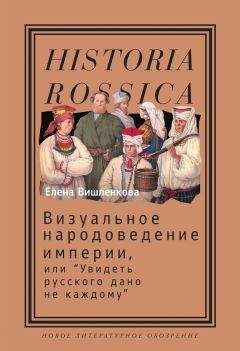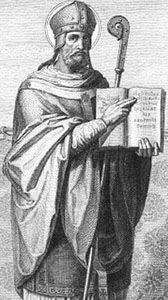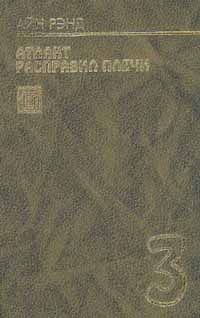91. Interpreting Visual Culture: Explorations in the Hermeneutics of the Visual / ed. I. Heywood, B. Sandywell. New York: Routledge, 1999. XVIII, 260 p.
92. Jahn H. F. «Us»: Russians on Russianness // National Identity in Russian Culture / ed. S. Franklin, E. Widdis. Cambridge, 2004. P. 53–73.
93. Jay M. Cultural Relativism and the Visual Turn // Journal of Visual Culture. 2002. Vol. 1, № 3. P. 267–278.
94. Jenks A. L. Russia in a Box: Art and Identity in an Age of Revolution. DeKalb: Northern Illinois University Press, 2005. 264 p.
95. Kappeler A. Russland als Vielvolkerreich: Entstehung, Geschichte, Zerfall. München: Beck, 1992. 395 s.
96. Kelly C. [Review] // Revolutionary Russia. 2008. Vol. 21, № 1. P. 92. – Book review: Norris S. A War of Images: Russian Popular Prints, Wartime Culture, and National Identity, 1812–1945. DeKalb: Northern Illinois University Press, 2006. XIII, 277 p.
97. Knight N. Ethnicity, Nationality and the Masses: Narodnost’ and Modernity in Imperial Russia // Russian Modernity: Politics, Knowledge, Practices / ed. D. L. Hoffman and Y. Kotsonis. New York, 2000. P. 41–64.
98. Knight N. Constructing the Science of Nationality: Ethnography in Mid-Nineteenth Century Russia. Ph.D. Diss.: Columbia University, 1994.
99. Kornblatt J. O. The Cossack Hero in Russian Literature: A Study in Cultural Mythology. Madison, Wisc.: University of Wisconsin Press, 1992. XIII, 229 p.
100. Kress G., Van Leeuwen T. Reading Images: The Grammar of Visual Design. London: Routledge, 1996. X, 288 p.
101. Kruger K. Der Blick ins Innere des Bildes. Asthetische Illusion bei Gerhard Richter // Pantheon. 1995. Bd. 53. S. 149–166.
102. Kusber J. Grenzen der Reform im Russland Katharinas II // Zeitschrift für historische Forschung. 1998. Bd. 25, 4. S. 509–528.
103. Kusber J. Individual, Subject, and Empire. Toward a Discourse on Upbringing, Education, and Schooling in the Time of Catherine II // Ab Imperio. 2008. № 2. P. 125–156.
104. L’Anti-Napoléon: Caricatures et satires du Consulat á l’Empire: Musée national des châteaux de Malmaison et de Bois-Préau, 30 mai – 30 septembre 1996. Paris: Musée national des châteaux de Malmaison et de Bois-Préau: Réunion des musées nationaux, 1996. 125 p.
105. La France et la Russie au Siècle des Lumiéres: relations culturelles et artistiques de la France et de la Russie au XVIII siècle. Paris: Ministère des affaires étrangères: Association française d’action artistique, 1986. 490 p.
106. Landes J. B. Visualizing the Nation: Gender, Representation, and Revolution in Eighteenth-Century France. Ithaca: Cornell University Press, 2001. XIII, 254 p.
107. Languages of Visuality: Crossings Between Science, Art, Politics and Literature / ed. B. Allert. Detroit: Wayne State University Press, 1996. XII, 270 p.
108. Lavater J. C. Essai sur la physiognomie, destiné à faire connotre l’homme et à le faire aimer: trad. de l’allemand. La Haye, 1781–1803. Vol. 1–4.
109. Le Brun Ch. Conférence sur l’expression générale et particulière. Paris, 1668.
110. Le Prince J. B. Le Voyage en Russie: Collections de la Ville de Rouen, 2004.
111. Le Prince J. B. Oeuvres, contenant plus de 160 planches representant divers costumes et habillements des peuples du Nord. Paris, 1782.
112. Leclerc N. G. Histoire physique, morale, civile et politique de la Russie ancienne. Paris: Froullâe, 1783–1784. Vol. 1–3 (XX, 510; XXIV, 560; 748 p.)
113. Leclerc N. G. Histoire physique, morale, civile et politique de la Russie moderne. Paris: chez Froullâe [et al.], 1783–[1793]. Vol. 1–3 (536; 619; 424 p.).
114. Levesque P.-Ch. Moeurs, Usages et Costumes des Peoples de la Russie. Paris, 1801.
115. Lippa R. A. On Deconstructing and Reconstructing Masculinity-Femininity // Journal of Research in Personality. 2001. Vol. 35, № 2. P. 168–207.
116. Markus G. Culture: The Making and the Make-up of a Concept: (An Essay in Historical Semantics) // Dialectical Anthropology. 1993. Vol. 18, № 1. P. 3–29.
117. Marshall P. J., Williams G. The Great Map of Mankind: British Perceptions of the World in the Age of Enlightenment. London: Dent, 1982. [6], 314 p.
118. Martin A. M. Romantics, Reformers, Reactionaries: Russian Conservative Thought and Politics in the Reign of Alexander I. DeKalb, Ill.: Northern Illinois University Press, 1997. X, 294 p.
119. McGregor G. A Case Study in the Construction of Place: Boundary Management as Theme and Strategy in Canadian Art and Life // Invisible Culture: An Electronic Journal for Visual Culture. 2003. Issue 5: Visual Culture and National Identity. http://www.rochester.edu/in_visible_culture/Issue_5/McGregor/McGregor.html (последнее посещение 10.11.2010.
120. Meskimmon M. Visuality. The New, New Art History? // Art History. 1997. Vol. 20, № 2. P. 331–335.
121. Mirzoeff N. The Multiple Viewpoint: Diaspora and Visual Culture // The Visual Culture Reader / ed. N. Mirzoeff. London; New York, 2002. P. 204–214.
122. Mirzoeff N. An Introduction to Visual Culture. London; New York: Routledge, 1999. XI, 274 p.
123. Mitchell W. J. T. Iconology: Image, Text, Ideology. Chicago: The University of Chicago Press, 1986. 226 p.
124. Mitchell W. J. T. Picture Theory: Essays on Verbal and Visual Representation. Chicago: University of Chicago Press, 1994. XV, 445 p.
125. Mitchell W. J. T. What is Visual Culture? // Meaning in the Visual Arts: Views from the Outside: A Centennial Commemoration of Erwin Panofsky (1892–1968) / ed. I. Lavin. Princeton, 1995. P. 207–217.
126. Modernity and the Hegemony of Vision / ed. D. M. Levin. Berkeley, Calif.: University of California Press, 1993. XII, 408 p.
127. Moeurs et Costumes des Russes, représentés en 50 planches coloriées exécutées en litographie. Paris; Strasbourg, 1821.
128. Moscovici S. The Phenomenon of Social Representations // Social Representations / ed. R. M. Farr and S. Moscovici. New York, 1984. P. 3–69.
129. Mullin A. Purity and Pollution: Resisting the Rehabilitation of a Virtue // Journal of the History of Ideas. 1996. Vol. 57, № 3. P. 509–524.
130. National Identity in Russian Culture / ed. S. Franklin and E. Widdis. Cambridge: Cambridge University Press, 2004. XIII, 240 p.
131. Norris S. Russian Images of War: The Lubok and Wartime Culture, 1812–1917: Ph. D. Dissertation. University of Virginia. 2001.
132. Norris S. M. A War of Images: Russian Popular Prints, Wartime Culture, and National Identity, 1812–1945. DeKalb: Northern Illinois University Press, 2006. XIII, 277 p.
133. Ogilvie B. W. The Many Books of Nature: Renaissance Naturalists and Information Overload // Journal of the History of Ideas. 2003. Vol. 64, № 1. P. 29–40.
134. Ogilvie B. W. The Science of Describing: Natural History in Renaissance Europe. Chicago; London: University of Chicago Press, 2006. XVI, 385 p.
135. Pallas P. S. Neuen Reisen in die Südlicher Statthalterschaften des Russischen Reichs. Leipzig, 1799–1801. Bd. 1–2.
136. Pallas P. S. Travels through the Southern Provinces of the Russian Empire in the Years 1793 and 1794. London, 1802–1803. Vol. 1–2.
137. Panofsky E. Perspective as Symbolic Form / translated by C. S. Wood. New York: Zone Books, 1991. 196 p.
138. Patten R. L. Conventions of Georgian Caricature // Art Journal. 1983. Vol. 43, № 4. P. 331–338.
139. Pauly T. Description ethnographique des peuples de la Russie. St. Petersburg, 1862.
140. Percival M. The Appearance of Character. Physiognomy and Facial Expression in Eighteenth-Century France. Leeds: W. S. Maney for the Modern Humanities Research Association, 1999. 218 p.
141. Pesenson M. Napoleon Bonaparte and Apocalyptic Discourse in Early Nineteenth-Century Russia // The Russian Review. 2006. Vol. 65, 3. P. 373–392.
142. Petersen A. Unmasking the Masculine: «Men» and «Identity» in a Sceptical Age. London: SAGE, 1998. VI, 149 p.
143. Physiognomische Fragmente zur Beförderung der Menschenkenntnis und Menschenliebe / von J. C. Lavater. Leipzig: Winterthur: Weidmanns, 1775–1778. Bd. 1–4.
144. Picturesque Representations of the Dress and Manners of the Russians: Illustrated by sixty-four coloured engravings, with descriptions. London,1814. [2], V, [131] p.
145. Picturing Russia: Explorations in Visual Culture / ed. V. A. Kivelson and J. Neuberger. New Haven: Yale University Press, 2008. XV, 284 p.
146. Piles Roger de. L’idée du peintre parfait. Paris, 1699.
147. Popper K. R. Conjectures and Refutations: the Growth of Scientific Knowledge. London: Routledge and Kegan Paul, 1963. 412 p.
148. Popper K. R. The Logic of Scientific Discovery. London: Hutchinson, 1972. 480 p.
149. Porter R. K. Traveling Sketches in Russia and Sweden During the Years 1805, 1806, 1807, 1808. London, 1809. Vol. 1–2. [Idem.] The second edition, with forty-one plates. London: John Stockdale, 1813. Vol. 1–2.
150. Potts A. Natural Order and the Call of the Wild: the Politics of Animal Picturing // Oxford Art Journal. 1990. Vol. 13, № 1. P. 12–33.
151. Power Elites and State-Building / ed. W. Reinhard. Oxford: Clarendon, 1996. 316 p.
152. Raeff M. Origins of the Russian Intelligensia: The Eighteenth-Century Nobility. New York; London: Harcourt Brace Jovanovich, 1966. 248 p.
153. Raeff M. Understanding Imperial Russia: State and Society in the Old Regime / translated by A. Goldhammer. New York: Columbia University Press, 1984. XIX, 248 p.
154. Rafael V. L. Confession, Ñonversion and Reciprocity in Early Tagalog Colonial Society // Colonialism and Culture / ed. N. Dirks. Ann Arbor: University of Michigan Press, 1992. P. 65–88.
155. Reau L. L’Exotisme russe dans l’oeuvre de J.-B. Le Prince // Gazette des Beaux-Arts. 5e per. 1921. № 3. P. 147–165.
156. Rechberg Ch. de. Les peuples de la Russie ou description des moeurs, usages et costumes des diverses nations de l’empire de Russie, accompagnée de figures coloriées. Paris, 1812–1813. Vol. 1–2.
157. Refaie E. E. Understanding Visual Metaphor: The Example of Newspaper Cartoons // Visual Communication. 2003. Vol. 2, № 1. P. 75–95.
158. Reinventing Anthropology / ed. D. Hymes. New York: Vintage Books, 1974. VI, 470 p.
159. Remakers B. Kinderen van Saturnus. Afstand en nabijheid in de beeldende kunst en het toneel van de zestiene eeuw // Het exotische verbeeld 1550–1950: Boeren en verre volken in de Naderlandse Kunst. Zwolle, 2003. P. 13–53.
160. Richmond S. The Interaction of Art and Science // Leonardo. 1984. Vol. 17, № 2. P. 81–86.
161. Roger H. National Consciousness in Eighteenth-Century Russia. Cambridge, Mass.: Harvard University Press, 1960. 319 p.
162. Roosevelt P. R. Emerald Thrones and Living Statues: Theater and Theatricality on the Russian Estate // The Russian Review. 1991. Vol. 50, № 1. P. 1–23.
163. Roosevelt P. R. Life on the Russian Country Estate: A Social and Cultural History. New Haven; London: Yale University Press, 1995. XVI, 361 p.
164. Roth C. M. Vorstellungen der Kleidertrachten der Nationen des russ. Reiches, zusammen mit Schlepper. St. Petersburg, 1775.
165. Russia and the World of the Eighteenth Century: proceedings of the third International Conference organized by the Study Group on eighteenth-century Russia and held at Indiana University at Bloomington, USA, September 1984 / ed. R. F. Bartlett, A. G. Gross, K. Rasmussen. Columbus: Slavica Publishers, 1988. 680 p.
166. Russia Engages the World, 1453–1825 / ed. C. H. Whittaker with E. Kasinec and R. H. Davis. Cambridge, Mass.: Harvard University Press, 2003. XVI, 208 p.
167. Russia’s Orient: Imperial Borderlands and Peoples, 1700–1917 / ed. D. R. Brower and E. J. Lazzerini. Bloomington: Indiana University Press, 1997. XX, 339 p.
168. Russian Empire: Space, People, Power, 1700–1930 / ed. J. Burbank, M. von Hagen, A. Remnev. Bloomington: Indiana University Press, 2007. XII, 538 p.
169. Russian Modernity: Politics, Knowledge, Practices / ed. D. L. Hoffman and Y. Kotsonis. Basingstoke (Hants.); London; New York: Macmillan Press: St. Martin’s Press, 2000. VIII, 279 p.
170. Russian Nationalism: Past and Present / ed. G. Hosking and R. Service. Houndmills, Basingstoke, UK; New York: Macmillan Press: St. Martin’s Press in association with the School of Slavonic and East European Studies, University of London, 1998. VIII, 217 p.
171. Russianness: Studies on a Nation’s Identity: In honor of Rufus Mathewson, 1918–1978. Ann Arbor, MI: Aridis, 1990. 236 p.
172. Russische Begriffsgeschichte der Neuzeit: Beiträge zu einem Forschungsdesiderat / herausgegeben von P. Thiergen; unter Mitarbeit von M. Munk. Köln; Weimar; Wien: Böhlau, 2006. XXIX, 547 s. – (Bausteine zur slavischen Philologie und Kulturgeschichte; bd. 50).
173. Sahlins M. Islands of History. Chicago: University of Chicago Press, 1985. XIX, 180 p.
174. Schapiro M. Words, Script, and Pictures: Semiotics of Visual Language. New York: George Braziller, 1996. 199 p.
175. Scheidemantel V. J. Porcelain Figures from the Russian Imperial Factory (Art Institute of Chicago) // The Burlington Magazine. 1968. Vol. 110, № 779. P. 96–97.
176. Schierle I. «For the Benefit and Glory of the Fatherland»: The Concept of Otechestvo // Eighteenth-Century Russia Society, Culture, Economy. Papers from the VII International Conference of the Study Group on Eighteenth-Century Russia / ed. R. Bartlett and G. Lehmann-Carli. Wittenberg, 2004. P. 283–295.
177. Schierle I. «Syn otecestva»: «Der wahre Patriot» // Russische Begriffsgeschichte der Neuzeit / ed. P. Thiergen. Köln, 2006. P. 347–367.
178. Schmitt J.-C. La culture de l’imago // Annales. Histoire, Sciences Sociales. 1996. Vol. 51, № 1. P. 3–36.




